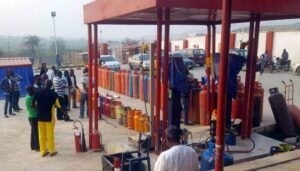Chairman of Geometric Power Limited and former Minister of Power, Prof. Barth Nnaji has called on the Nigerian Electricity Regulatory Commission (NERC) and the Nigerian Midstream and Downstream Petroleum Regulatory Authority (NMDPRA) to reconcile the worrying disparity in gas-to-power prices which is contributing to the challenge in gas supply to power generation companies (Gencos).
Nnaji made the call in Lagos while speaking at the Oriental News Nigeria 2025 Conference, with the theme: “Integrating Nigeria’s Gas Potential into Strategic Energy Transition Initiatives”.
Specifically, he urged NERC and NMDPRA to reconcile the gap between the regulated $2.42 per million British thermal units (MMBTU) domestic gas price for power generation and the prevailing market rate of $2.70 to $9.
He advocated a more realistic tariff framework that aligns with actual gas procurement costs for electricity Gencos.
Nnaji noted that while the official domestic gas price for power generation was formerly pegged at $2.42 per MMBtu, the NMDPRA revised this down to $2.13/MMBtu effective April 1, 2025.
He, however, noted that in reality, Gencos often source gas from the open market where prices range from $2.70 to as high as $9/MMBtu, depending on supply constraints and contract terms.
“Because most electricity is generated using gas, sourcincos depend heavily on sourcing this gas from the open market, the disparity between the regulated and actual prices continues to strain the sector,” Nnaji said.
He warned that the pricing gap is worsening the liquidity challenge in the power sector, contributing significantly to the N1.1 trillion electricity subsidy recorded in the first half of 2025 and the N5 trillion debt owed Gencos by the federal government.
According to him, the gas-to-power benchmark being below market realities places an unsustainable burden on power producers.
He also emphasised the need for more cost-reflective electricity tariffs, explaining that the current pricing structure fails to cover the operational and maintenance costs of Gencos, particularly as many critical inputs are imported.
“The energy charge component of the power tariff must be able to cover the cost of maintaining the assets. If operators can’t recover expenses for operations and maintenance, which are often dollar-denominated, there will be recurring system failures.The regulator must continue to adjust the tariff in line with actual industry costs to ensure sustainability,” Nnaji stated.




